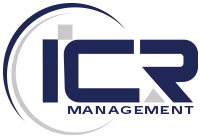Control Points in Corporate Crises: When Micromanagement Becomes an Asset
DOI:
https://doi.org/10.33422/icrmanagement.v2i1.1208Keywords:
Micromanagement, Crisis Management, Leadership Strategies, Contingency Models, Organizational StabilityAbstract
Corporate crises, such as financial fraud, product recalls, and cybersecurity breaches, necessitate precise and coordinated responses to mitigate damage and restore organizational stability. Whereas micromanaging is generally viewed as detrimental because it stifles morale, autonomy, and innovation among employees, this term paper examines the use of micromanaging as a situationally appropriate tool for leadership during crises. It utilizes organizational control theory and contingency leadership models to argue that micromanaging at specific key points can help individuals make better decisions, be more precise, and prevent deterioration in high-stakes scenarios. The paper examines micromanagement within the context of crisis management models, such as Fink's Four-Phase Model and Mitroff's Crisis Management Model, with a focus on its effectiveness during the preparation and response stages. Then, it discusses practical ways leaders can identify areas that require close attention, such as maximizing resource utilization, ensuring compliance with rules, and disseminating information effectively. For that reason, it highlights the importance of transitioning from micromanaging to more flexible, team-based leadership approaches that encourage new ideas and foster strength during recovery. Micromanagement is reframed here as an active, task-oriented tool that can be positive if applied judiciously in treading the treacherous landscape of a corporate crisis.
Downloads
Published
Issue
Section
License
Copyright (c) 2025 Andrian Gaju

This work is licensed under a Creative Commons Attribution 4.0 International License.








